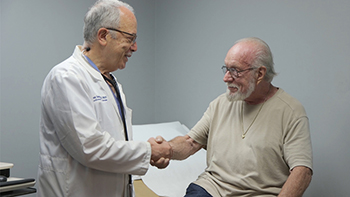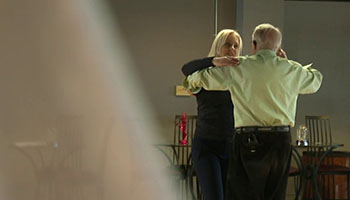Transcatheter Aortic Valve Replacement for Aortic Stenosis
Transcatheter Aortic Valve Replacement (TAVR) is a treatment option for aortic stenosis. Aortic stenosis is a common heart problem affecting approximately one million patients in the U.S. each year. TAVR is an innovative, minimally invasive
option for intermediate and high-risk patients. In 2005, Beaumont was the first hospital in North America to perform this procedure.
The aortic valve regulates blood flow from the left ventricle, the main pump of the heart, to the aorta and entire body.
Aortic stenosis is a mechanical problem caused by calcium accumulation in the aortic valve. The narrowing of the valve leads to reduced blood flow to the body and increased strain on
the left ventricle. Ultimately, this leads to symptoms including shortness of breath, chest discomforts and fainting. Left untreated, severe aortic stenosis can lead to death in up to 50 percent of patients.
The TAVR Procedure
In TAVR, a stent-based tissue valve mounted on a balloon catheter is inserted into the body via a small incision in the groin or chest wall. The patient's original aortic valve is "pushed aside" and the new stent valve is anchored in place allowing unobstructed
blood flow. The procedure requires the combined skills of an interventional cardiologist and cardiovascular surgeon. By combining minimally invasive techniques with the latest catheter technologies, TAVR is a non-surgical option that is less invasive
than conventional surgery and is done while the heart continues pumping.
Team-Based TAVR Procedure
Patients with aortic stenosis undergo a comprehensive evaluation by a multidisciplinary team in Beaumont's Heart Valve Clinic. The team consists of interventional
cardiologists, cardiac surgeons, and advanced cardiac imaging specialists. Together with the patient, family and referring physician, the team makes tailored recommendations for each patient.
For more information, or to speak with a heart valve coordinator, call a location nearest you:
Patient Stories
 82-year-old
celebrates life after 13th cardiac procedure
82-year-old
celebrates life after 13th cardiac procedure
Read More

Second Opinion keeps 86-year old dancing
Read More